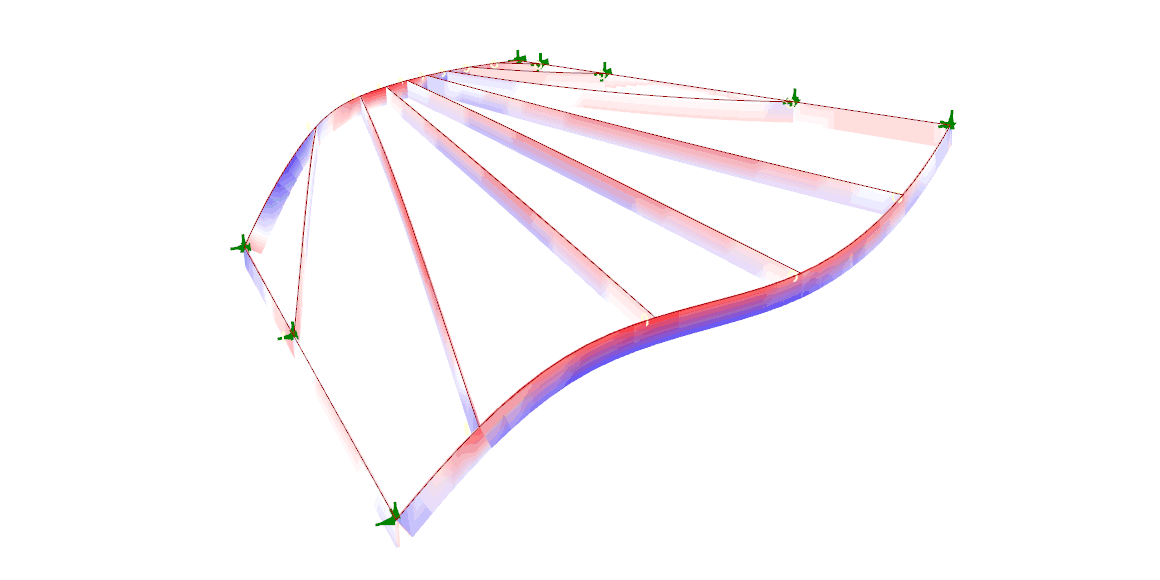Projected Array of Lines

Difficulty: Hard
A set of lines are projected onto a surface. The cross section optimizer determines the appropriate cross section sizes for each element. By setting eccentricities for the beam elements, the beams are aligned with the original surface.
Grasshopper Definition Screenshot
Link not working? Try our Sharepoint.
Examples are available for Karamba3D 2.2.0. Examples for previous releases can be found on Food4Rhino.
